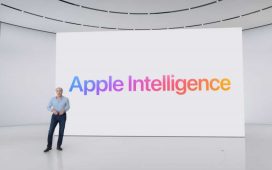Apple has confirmed WWDC 2023 will once again be an online event with an in-person keynote speech streamed from Apple Park on June 5. Speculation is focused on the company’s (will they/won’t they appear) mixed reality glasses, but what else will Apple professionals want to learn at WWDC?
About the show
If you’re new to Apple, the Worldwide Developers Conference (WWDC) is arguably the company’s most important annual event. That’s where it shows new operating system improvements, talks about strategy, and shows how it is extending its ecosystems to create new opportunities for developers.
Details in brief:
- WWDC takes place June 5-8 2023.
- The event will be streamed on Apple.com, the Apple Developer app, the Apple Developer website, Apple TV, and YouTube.
- There will be an in-person day at Apple Park on June 5, when the keynote and state of the union speeches will take place.
- Free to developers, the keynote will be widely available.
- Swift Student Challenge is open now.
- Developers will be able to access Apple engineers, attend sessions, labs and so on.
- Apple will share additional conference information in advance of WWDC23 through the Apple Developer app and on the Apple Developer website.
Susan Prescott, Apple’s vice president of Worldwide Developer Relations promised a lot: “WWDC23 is going to be our biggest and most exciting yet.”
So, what will people want to learn?
Maintaining security outside the wall
Apple continues to face regulatory pressure to open its platforms to additional competition. Most recently, we began to hear mutterings that the company is working to find some way to move in that direction, possibly extending to support for third-party browser engines and payment systems and potentially embracing third-party app stores somehow. We don’t yet know how that might work, nor do we know whether Apple will choose to make all of those changes.
But what enterprises will want to know is how Apple will sandbox any third-party apps or services to ensure the security and privacy of its devices, given that this is one of the biggest reasons people shift to Apple.
Will it be possible for enterprises to disable support for stores and services, or at least define which of these are available, to users of managed devices? (I’m thinking of a restriction against such use applied from the MDM console.)
In what way will Apple reassure business users that opening up the platform won’t degrade the security they need, particularly across heavily regulated industries?
The Apple Silicon challenge
There is no doubt that Apple Silicon Macs have generated huge success for Apple in the enterprise. Users like its enterprise services and support, hardware reliability, macOS identity management and support for evolutions across MDM provision. There’s already plenty of speculation the company may introduce its first M3-based systems and I’m sure some business users are already considering deferral of immediate hardware investments in hopes of more performance per watt from these new systems.
Enterprises will want to see what that means in performance and productivity terms and to assess the extent to which they might benefit from investment in this hardware. That AutoCAD and Autodesk Maya now run natively on Apple Silicon Macs will not be lost to them, and Microsoft’s recent decision to permit Windows virtual machines via Parallels means Macs have vaulted beyond the point at which they might be viable replacements for Windows PCs; they are now most definitely being used to replace them.
Under the hood
New year, new operating systems. In recent weeks, we’ve heard two sets of conflicting rumors from the same source:
- Not to expect much improvement from this year’s OS upgrades.
- And the opposite, to expect significant updates from the new operating systems.
Both predictions can’t be right, but for at least some members of Apple’s audience, what’s going to be of most interest will be the news buried beneath Apple’s more consumer friendly announcements.
Enterprises will want to know how they can use any augmented reality/accessibility enhancements that may be announced to benefit their business, particularly around product development, internal education, digital twins, and collaboration.
They’ll also be curious about the extent to which Apple’s AR vision embraces existing products, such as Maps. They will want to learn how Apple will maintain security while enabling sideloading, and they’ll seek further enhancements around data security, endpoint protection and zero trust.
Will Apple Reality enter reality?
While we’ve been anticipating some form of WWDC reveal to Apple’s mixed-reality glasses, there have been reports of hiccups in the development process that could delay the hardware. It wouldn’t be the first time developers are given the chance to explore different aspects of the product in demos held behind closed doors. That is how the company introduced the 2019 Mac Pro, which didn’t ship until months later. It’s also how Apple first introduced iPhone.
I imagine if Apple does choose to demo the product in this way, it will host the event in themed spaces, with a focus, say, on how the device can be used for collaboration, accessibility, games, product development, entertainment, and high-end creative applications. I think it probable selected Apple partners will already be building software for these demos.
Of course, aside from curiosity, enterprise pros will be looking to explore the software development kits and figure out how they can exploit the emerging tech to build new businesses and support existing ones. While competitors are already fielding unfriendly reports to suggest the first-generation product will be a bomb, most industry professionals recognize that it’s usually unwise to bet against Apple.
The hardware isn’t the star of the show at WWDC — the operating system that runs it and the experiences it supports are what matter. It’s the software that makes hardware interesting – that’s what WWDC is all about. It’s also why Siri needs rebooting.
One more thing…
Apple TV doesn’t tend to get much attention at WWDC, but that may change this year as the company will want to promote how it intends approaching sports streaming via its TV+ service. While that may not sound like a developer-focused topic it’s important to consider that Apple seems to be negotiating deals to stream super-hot sports properties, such as the Premier League; one reason some negotiations allegedly failed is because its teams haven’t been able to discuss future streaming products.
To get around that and to enable freer conversation when making deals, it makes sense for the company to discuss some of its future plans at WWDC. While this may have little implication beyond broadcasting, what’s good for sports entertainment may also interest developers of conferencing and remote live-event solutions, and their customers. All the same, put this down as a highly speculative hunch, inspired if I’m honest by discovery of a new multi-view window for TV+ sports shows.
Please follow me on Mastodon, or join me in the AppleHolic’s bar & grill and Apple Discussions groups on MeWe.
Copyright © 2023 IDG Communications, Inc.












